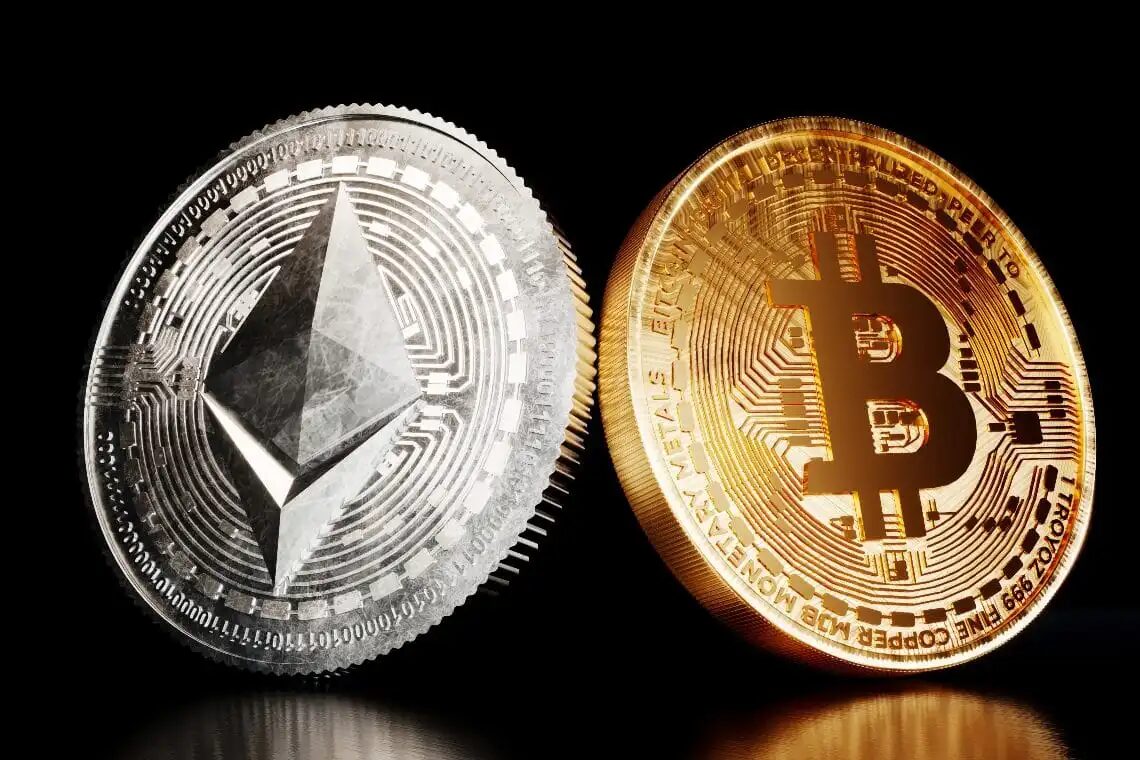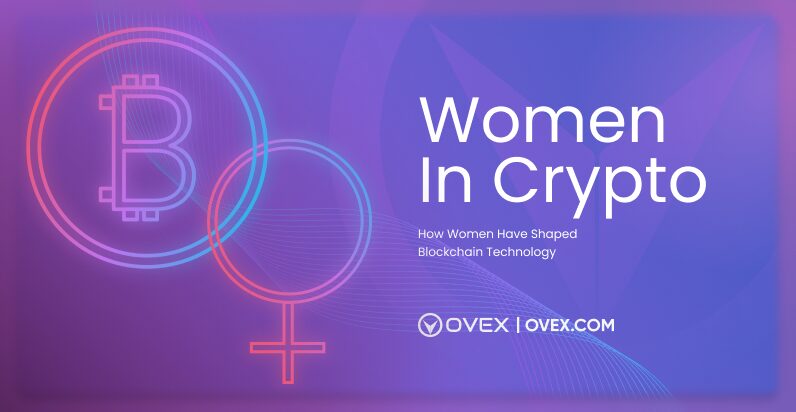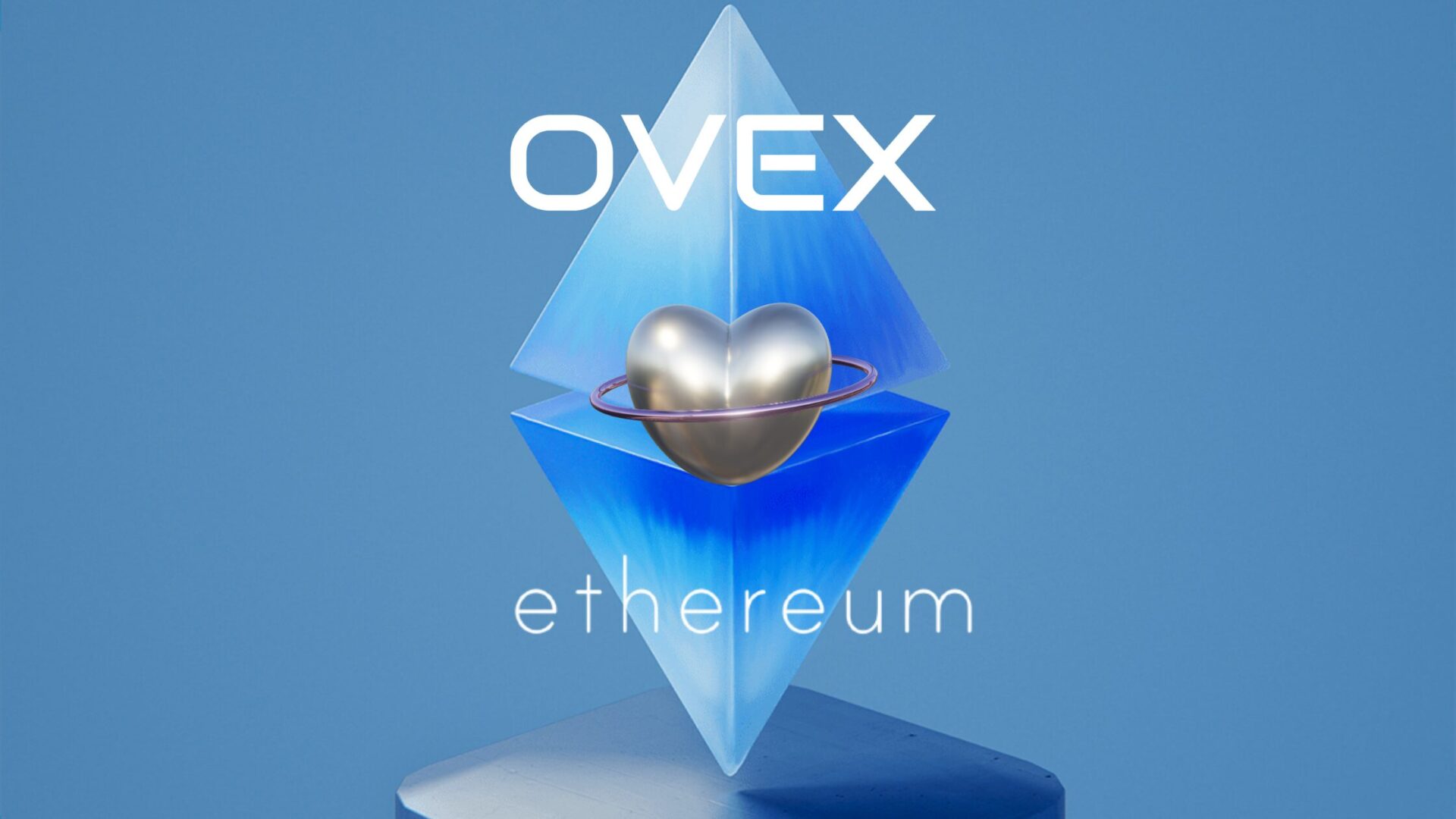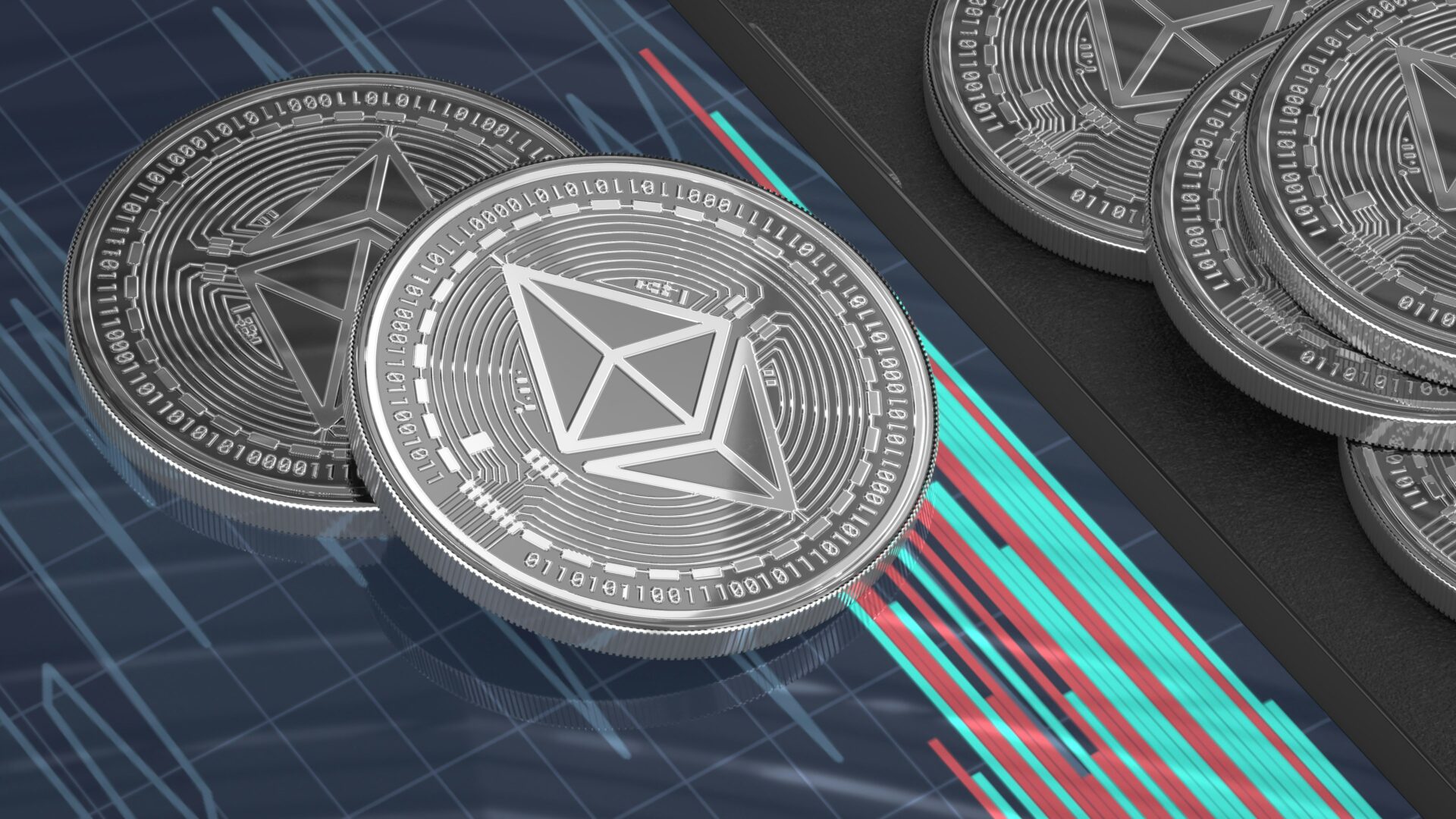Ethereum is planning a major software update that could affect your crypto investments. Suspense is building for The Ethereum Merge which will combine the current (proof of work) Ethereum mainnet with the (proof of stake) Beacon Chain.
Ethereum recently completed a test merge — a critical step to accomplishing its full software update scheduled for September.
Industry experts are closely watching every step leading up to the update as The Merge outcome will significantly impact the price of Ethereum.
What exactly is being merged?
The network that we all know as Ethereum (ETH1/Execution Layer) will be merging with the Beacon Chain (ETH 2/Consensus Layer). The Beacon Chain is a separate network running parallel to the Ethereum mainnet.
Beacon Chain is a parallel proof of stake side chain to Ethereum’s existing proof of work blockchain — often referred to as the Ethereum mainnet.
Beacon Chain does not impact users or apps on the main chain (or support smart contracts for that matter) but rather serves as a ‘record keeper’ of all transactions. Think of the new Beacon Chain as a relay runner. It is waiting for its turn to take the baton but needs to be running at the same speed before the official handoff.
Currently, Ethereum mainnet’s consensus mechanism uses a proof of work model to validate blocks. In this model, validators compete using energy intensive machines to solve complex equations and thereby gain the rights to produce the next block.
After The Merge, Ethereum’s blocks will be produced only through the Beacon Chain leveraging the less energy intensive alternative — proof of stake model.
Ethereum’s proof of work model will be permanently shelved. The Beacon Chain will begin actively coordinating all block-validation activity, randomly selecting validators for participation.
Proof of stake? 🥩
Decentralised cryptocurrency networks — like Bitcoin and Ethereum — need to make sure that nobody spends the same money twice without a central authority (like Visa or Mastercard) in the middle validating transactions.
Proof of stake is a type of consensus mechanism used by blockchains to achieve distributed consensus. In proof of work, miners prove they have capital at risk by expending energy. In proof of stake, validators explicitly stake capital in the form of ETH into a smart contract on Ethereum. This staked ETH then acts as collateral that can be destroyed if the validator does not act in the best interest of the network (aka slashing).
Becoming a validator bears significant responsibility. The minimum amount of ETH that validators are required to stake is often relatively high — a hefty 32ETH just to qualify. These validators can lose some (or all) of their stake via a process called slashing if their node goes offline or if they validate a bad block of transactions.
But that is not to say staking is inaccessible to the masses. If staking proves too technical or expensive you can easily start staking in custodial staking systems — usually run by exchanges.
These staking pools handle the complete staking process on your behalf. You simply deposit any amount of ETH, and they will set up the node for you.
Cryptocurrencies including Cardano, Fantom, and Avalanche all use proof of stake consensus mechanisms — with the ultimate goal of maximising speed and efficiency whilst lowering fees and environmental impact.
The Merge Process?
How does an entire community persuade all validators and users to abandon proof of work for the new proof of stake alternative? Technically — following the upgrade one could continue trading on ETH1.
To address this, the core team created a solution to freeze proof of work. They call it the difficulty bomb.
The difficulty bomb code was developed in 2016 and rapidly increases the difficulty to mine a block on Ethereum, eventually making it economically infeasible to mine ETH using the proof or work protocol.
What happens after the merge?
Immediately after the merge — If transaction volumes continue at current rates — ETH is expected to offer an even better yield to stakers. According to Coinshares, the base APY number seems to fluctuate between 8% and 12%.
Be mindful though — the functionality to withdraw staked ETH is not scheduled to go live along with the Merge. Instead, developers will focus on features such as these in the post-merge period, which does not have a set timeline. This means your staked ETH is locked — indefinitely.
In fact. Many analysts predict an ETH supply shock. This as market participants stake their coins for yield thereby eliminating sell pressure. Cryptocurrency investor, Raoul Pal, says that currently around 9% of all Ethereum is staked and that this number should rise to about 30% post Merge. Also contributing to reduced sell pressure will be the absence of proof of work miners selling down the price in order to pay for the operational costs inherent in mining ops. But The Merge is only one of many obstacles Ethereum must clear in order to cement itself as the Layer 1 smart contract protocol of the future. Updating the network’s consensus mechanism will not solve the issue of high fees or slow throughput.
This is why, at a recent Ethereum conference, Vitalik made clear that after The Merge Ethereum can only be considered ‘51% complete’.
The next steps in Ethereum’s build are referred to (by Vitalik) as the surge, verge, purge, and splurge. These nursery rhyme upgrades should not be taken for granted. They will have significant impact on the way Ethereum works.
The surge refers to the addition of Ethereum sharding, a scaling solution which will further enable cheap layer-2 blockchains, lower the cost of rollups or bundled transactions, and make it easier for users to operate nodes that secure the Ethereum network.
The verge will implement what Vitalik calls Verkle trees (a type of mathematical proof) and “stateless clients”. These technical upgrades will allow users to become network validators without having to store extensive amounts of data on their machines.
The purge will cut down the amount of space you have to have on your hard drive. This is achieved by simplifying the Ethereum protocol over time and not requiring nodes to store history.
The splurge is a series of miscellaneous smaller upgrades which ensure the network runs smoothly following the prior 4 stages.
Although Ethereum has a long and windy road ahead. The Ethereum community has attracted some brilliant minds, including application developers and core protocol developers.
The upgrading of the core Ethereum protocol is a huge undertaking that has been meticulously planned and will determine the overall fate of the second biggest crypto project (by both volume and market cap).














Your point of view caught my eye and was very interesting. Thanks. I have a question for you. https://accounts.binance.com/ru/register-person?ref=V3MG69RO
Can you be more specific about the content of your article? After reading it, I still have some doubts. Hope you can help me.
Your article helped me a lot, is there any more related content? Thanks! https://accounts.binance.com/fr-AF/register?ref=JHQQKNKN
I don’t think the title of your article matches the content lol. Just kidding, mainly because I had some doubts after reading the article.
Your point of view caught my eye and was very interesting. Thanks. I have a question for you.
Your point of view caught my eye and was very interesting. Thanks. I have a question for you.
Your point of view caught my eye and was very interesting. Thanks. I have a question for you.
I don’t think the title of your article matches the content lol. Just kidding, mainly because I had some doubts after reading the article.
I don’t think the title of your article matches the content lol. Just kidding, mainly because I had some doubts after reading the article.
I don’t think the title of your article matches the content lol. Just kidding, mainly because I had some doubts after reading the article.
Kubet is proud to be Asia’s leading online bookmaker, offering a comprehensive entertainment ecosystem including KU Casino, sports betting, card games, fish shooting, cockfighting and lottery. Licensed by PAGCOR and growing strongly in Vietnam, Kubet not only stands out for its transparency, high payout rates but also for its smooth user experience, modern technology applications and attractive promotions. Discover full information, instructions and outstanding benefits of Kubet right on the official homepage https://versatilo.london.
Can you be more specific about the content of your article? After reading it, I still have some doubts. Hope you can help me.
Thank you for your sharing. I am worried that I lack creative ideas. It is your article that makes me full of hope. Thank you. But, I have a question, can you help me?
I don’t think the title of your article matches the content lol. Just kidding, mainly because I had some doubts after reading the article.
Với nền tảng công nghệ hiện đại, QQ88 đảm bảo tốc độ giao dịch nhanh chóng và ổn định. Kho trò chơi đa dạng cùng tỷ lệ thắng hấp dẫn mang lại trải nghiệm vượt trội. Lựa chọn QQ88 là bước đi đúng đắn cho mọi người chơi chuyên nghiệp.
Thanks for sharing. I read many of your blog posts, cool, your blog is very good.
Thank you for your sharing. I am worried that I lack creative ideas. It is your article that makes me full of hope. Thank you. But, I have a question, can you help me? https://www.binance.info/cs/register?ref=S5H7X3LP
Thank you for your sharing. I am worried that I lack creative ideas. It is your article that makes me full of hope. Thank you. But, I have a question, can you help me? https://www.binance.info/en-IN/register-person?ref=UM6SMJM3
Thank you for your sharing. I am worried that I lack creative ideas. It is your article that makes me full of hope. Thank you. But, I have a question, can you help me? https://www.binance.info/en-NG/register?ref=JHQQKNKN
I don’t think the title of your article matches the content lol. Just kidding, mainly because I had some doubts after reading the article.
Your point of view caught my eye and was very interesting. Thanks. I have a question for you.
Thank you for your sharing. I am worried that I lack creative ideas. It is your article that makes me full of hope. Thank you. But, I have a question, can you help me? https://www.binance.info/si-LK/register?ref=V2H9AFPY
Thank you for your sharing. I am worried that I lack creative ideas. It is your article that makes me full of hope. Thank you. But, I have a question, can you help me?
QQ88 – Nhà cái đỉnh cao Châu Á, mở ra thiên đường giải trí với casino lộng lẫy, bắn cá đầy kịch tính, nổ hũ mang may mắn, thể thao sục sôi, và đá gà đầy hấp dẫn. Là điểm hội tụ của hàng triệu người chơi, QQ88 biến đam mê thành những chiến thắng ngoạn mục!
OK9 là một nhà cái cá cược thể thao hàng đầu, mang đến cho người chơi một nền tảng cá cược chuyên nghiệp và an toàn. Với OK9, bạn có thể dễ dàng tham gia vào các trận đấu thể thao hấp dẫn và trải nghiệm cảm giác cá cược đỉnh cao.
Thanks for sharing. I read many of your blog posts, cool, your blog is very good.
Your point of view caught my eye and was very interesting. Thanks. I have a question for you.
OK9 là một nhà cái cá cược thể thao hàng đầu, mang đến cho người chơi một nền tảng cá cược chuyên nghiệp và an toàn. Với OK9, bạn có thể dễ dàng tham gia vào các trận đấu thể thao hấp dẫn và trải nghiệm cảm giác cá cược đỉnh cao.
new88cz. dễ chơi, dễ trúng và thậm chí tôi có thể kiếm nhiều tiền tại đây
I don’t think the title of your article matches the content lol. Just kidding, mainly because I had some doubts after reading the article.
QQ88 là nhà cái hàng đầu Châu Á, mang đến sân chơi giải trí với casino đa dạng, bắn cá đầy hấp dẫn, nổ hũ kịch tính, thể thao sôi động và đá gà cuốn hút. Đây là nơi hàng triệu người chơi tụ họp để trải nghiệm và chinh phục chiến thắng.
Xoilac TV không chỉ đơn thuần là một trang xem bóng đá, mà là nơi kết nối cảm xúc của hàng triệu fan túc cầu. Tại đây, người xem được tận hưởng bóng đá trực tiếp với hình ảnh full HD, âm thanh sống động và tốc độ truyền tải siêu nhanh.
Đăng ký QQ88 ngay hôm nay nhận ngày 88K, tham gia cá cược casino QQ88 để thắng lớn mỗi ngày tại trang web https://qq88.co.com/
QQ8876 Net cập nhật tên miền mới, đăng ký nhanh tại flor2u.ru.com để nhận 88K
Thanks for sharing. I read many of your blog posts, cool, your blog is very good.
Nạp từ 500K lần đầu QQ88 tặng 88K bonus, sử dụng cho bắn cá và thể thao; RTP cao, hoàn trả 1% hàng tuần, lý tưởng cho người chơi trung cấp.
OK9 – nền tảng xem thể thao & eSports hàng đầu. Giao diện thân thiện, hoạt động 24/7. 🚀 Bắt đầu hành trình trải nghiệm của bạn ngay hôm nay!
New88 uy tín thật, chơi bao năm chưa gặp lỗi gì!
OK9 có ưu đãi đặc biệt: nạp đầu hoàn 100% + 60K tặng kèm — nhận quà ngay khi đăng nhập tại p-bjaketo.ru.com
OK922 là link truy cập mới nhất của nhà cái OK9, ko bị chặn hay giật lag khi chơi game. Trải nghiệm đa dạng trò chơi thưởng cực lớn. Ưu đãi thành viên mới nhận miễn phí 69K.
Nhận ngay 69K trải nghiệm tất cả các trò chơi hấp dẫn, giải trí vui nhộn tại OK9 hôm nay.
Thanks for sharing. I read many of your blog posts, cool, your blog is very good.
OK9 update phiên bản mới! giao diện đẹp mắt, trò chơi phong phú! Chờ đợi gì mà chưa ” đăng nhập OK9″ ngay bây giờ để trải nghiệm! +GIFTCODE 69K tại đây.
Thanks for sharing. I read many of your blog posts, cool, your blog is very good. https://www.binance.info/lv/register-person?ref=B4EPR6J0
Can you be more specific about the content of your article? After reading it, I still have some doubts. Hope you can help me.
Thank you for your sharing. I am worried that I lack creative ideas. It is your article that makes me full of hope. Thank you. But, I have a question, can you help me?
Your article helped me a lot, is there any more related content? Thanks!
Thank you for your sharing. I am worried that I lack creative ideas. It is your article that makes me full of hope. Thank you. But, I have a question, can you help me?
I don’t think the title of your article matches the content lol. Just kidding, mainly because I had some doubts after reading the article.
Your point of view caught my eye and was very interesting. Thanks. I have a question for you.
78WIN เป็น เว็บเดิมพันออนไลน์ที่มีความน่าเชื่อถือสูง มอบประสบการณ์การเล่นที่ปลอดภัย โปร่งใส และสนุกสนานสำหรับผู้เล่นทุกคน. ด้วย เทคโนโลยีล้ำสมัย และ การบริการระดับมืออาชีพ 78winbiz.com จึงกลายเป็นตัวเลือกอันดับหนึ่งสำหรับนักเดิมพันออนไลน์.
Jun88 là trang hỗ trợ cập nhật link vào Jun88 nhanh nhất 2025, cung cấp hướng dẫn. Sân chơi Jun88 hoạt động hợp pháp dưới giấy phép Curaçao, sở hữu hệ sinh thái giải trí đa dạng và bảo mật SSL 128-bit.
Can you be more specific about the content of your article? After reading it, I still have some doubts. Hope you can help me.
Your point of view caught my eye and was very interesting. Thanks. I have a question for you.
I don’t think the title of your article matches the content lol. Just kidding, mainly because I had some doubts after reading the article.
Can you be more specific about the content of your article? After reading it, I still have some doubts. Hope you can help me.
Can you be more specific about the content of your article? After reading it, I still have some doubts. Hope you can help me.
Can you be more specific about the content of your article? After reading it, I still have some doubts. Hope you can help me.
I don’t think the title of your article matches the content lol. Just kidding, mainly because I had some doubts after reading the article. https://accounts.binance.com/da-DK/register?ref=V3MG69RO
Thanks for sharing. I read many of your blog posts, cool, your blog is very good.
OK9 tặng 100% thưởng tân thủ cho người đăng ký mới, cơ hội quá ngon luôn! OK9 Trang Chính Thức
Can you be more specific about the content of your article? After reading it, I still have some doubts. Hope you can help me. https://www.binance.com/ru-UA/register?ref=JVDCDCK4
QQ88 – Điểm đến cá cược trực tuyến uy tín, quy tụ game hot, thưởng cao, giao dịch nhanh và hỗ trợ tận tâm 24/7.
Howdy! I’m at work surfing around your blog from my new apple iphone!
Just wanted to say I love reading your blog and look forward to all your posts!
Carry on the fantastic work!
F168 แหล่งรวมเกมเดิมพันครบวงจรอันดับต้น ๆ ของไทย ไม่ว่าจะเป็นสล็อตแตกบ่อย คาสิโนสด เกมยิงปลา หรือกีฬา เล่นได้ทุกอุปกรณ์ ฝาก–ถอนรวดเร็ว ปลอดภัย มาตรฐานสูง ข้อมูลสมาชิกได้รับการปกป้องอย่างมั่นใจ พร้อมโปรโมชั่นต่อเนื่อง โบนัสต้อนรับ คืนยอดเสีย และสิทธิพิเศษ VIP ทีมงานดูแล 24 ชั่วโมง ให้คุณสนุกไปกับ F168 ได้อย่างเต็มที่.
QQ88 là nhà cái giải trí trực tuyến uy tín châu Á, trực thuộc Liên Minh OKVIP, cung cấp casino live, thể thao, nổ hũ, bắn cá và xổ số với bảo mật cao, giao dịch nhanh.
Good post. I learn something new and challenging on websites
I stumbleupon everyday. It’s always interesting to
read articles from other authors and practice something from other sites.
Hmm is anyone else encountering problems with the images on this blog loading?
I’m trying to figure out if its a problem on my end
or if it’s the blog. Any responses would be greatly appreciated.
Thanks for sharing. I read many of your blog posts, cool, your blog is very good. https://www.binance.info/register?ref=IXBIAFVY
A PelviFit Lite é uma sonda descartável perineal vaginal
que capta sinais de eletromiografia, biofeedback eletromiográfico,
mas bem como serve pra estimulação muscular pela localidade do períneo.
De cada modo, o trabalho “Tratamento fisioterapêutico das disfunções sexuais femininas: uma revisão de literatura”,
publicado em 04/07/2017, conclui que: “a fisioterapia promove grandes ganhos nas DS, destacando a importância sobre o treinamento da musculatura pélvica pela reversibilidade do quadro.” Mas lamenta a escassez de estudos
a respeito de. De acordo com um estudo publicado pela já argumentada Revista Acta Fisiátrica, chamado “Atuação da fisioterapia nas disfunções sexuais femininas: uma revisão sistemática”, há 5
principais tratamentos fisioterápicos. Perceba
que essas condições estão diretamente relacionadas ao tônus muscular e à sensibilização regional –
os 2 principais temas da fisioterapia uroginecológica.
Entre os suprimentos de eletromiografia e biofeedback que otimizam a
aplicação da fisioterapia nas disfunções sexuais, demonstram-se dois dispositivos que estão sendo
lançados no mercado. Dessa maneira, o biofeedback ganha ainda mais espaço na
fisioterapia da disfunção sexual. Observa-se que a fisioterapia nas
disfunções sexuais, principalmente as femininas, é uma solução capaz que tem
que ser mais explorada e estudada cientificamente. https://vibs.me/g1-x-animal-funciona-anvisa-composicao-preco-valor-comprar-resenha-farmacia-bula-reclame-aqui-saiba-tudo-2024/
A PelviFit Lite é uma sonda descartável perineal vaginal que capta sinais de eletromiografia, biofeedback eletromiográfico,
mas bem como serve pra estimulação muscular pela localidade do períneo.
De cada modo, o trabalho “Tratamento fisioterapêutico das disfunções sexuais femininas: uma revisão de literatura”,
publicado em 04/07/2017, conclui que: “a fisioterapia promove grandes ganhos nas DS, destacando a importância sobre o treinamento da musculatura pélvica pela reversibilidade do quadro.” Mas lamenta a escassez de estudos a
respeito de. De acordo com um estudo publicado pela já argumentada Revista Acta Fisiátrica, chamado “Atuação da fisioterapia nas disfunções sexuais femininas: uma revisão sistemática”, há
5 principais tratamentos fisioterápicos. Perceba que essas condições estão diretamente relacionadas ao tônus muscular e
à sensibilização regional – os 2 principais temas da fisioterapia uroginecológica.
Entre os suprimentos de eletromiografia e biofeedback que otimizam a aplicação da fisioterapia nas
disfunções sexuais, demonstram-se dois dispositivos que estão sendo lançados no mercado.
Dessa maneira, o biofeedback ganha ainda mais espaço na fisioterapia
da disfunção sexual. Observa-se que a fisioterapia nas disfunções sexuais, principalmente as femininas, é uma solução capaz
que tem que ser mais explorada e estudada cientificamente. https://vibs.me/g1-x-animal-funciona-anvisa-composicao-preco-valor-comprar-resenha-farmacia-bula-reclame-aqui-saiba-tudo-2024/
Resumindo as respostas: – Questão 05: B – Questão 06:
Nenhuma correta – Questão 07: B – Questão 08: C Se necessitar de
mais alguma coisa, é só avisar! Questão 07: I.
HIV. Alternativa correta: B. — Questão 06: A. Pâncreas,
próstata e ossos. Falso. Nenhuma escolha parece correta, contudo a
próstata é um dos principais tipos de câncer a ser assediado.
O defeito pode ser causado por múltiplos fatores, como conflitos no relacionamento,
modificações hormonais, inexistência de intimidade,
problemas de comunicação com o(a) parceiro(a), além de
traumas sexuais. Eventualmente essa condição está associada a
quadros clínicos, como acidentes, transformações hormonais e ginecológicas.
Os detalhes encontradas pelo grupo do Instituto Karolinska e da Universidade
Uppsala, da Suécia, podem ser fundamentais para os pacientes que não aconselharam avanço da situação com
os remédios e as terapias disponíveis na
atualidade. Chamada pelos médicos de disfunção erétil,
a impotência sexual é uma circunstância relativamente comum que afeta pacientes de diferentes faixas etárias, em que o homem não
consegue ter ou preservar ereção no pênis. Lesões medulares em
volta de L1 apresentam sinais e sintomas como: paresia distal nas pernas, perda de impressão perianal e perineal (anestesia em sela),
disfunção erétil, reflexo bulbocavernoso e da prega
anal anormais, entre outros. https://diet365.fit/g1-saude-da-prostata-funciona-anvisa-composicao-preco-valor-comprar-resenha-farmacia-bula-reclame-aqui-saiba-tudo-2025/
Resumindo as respostas: – Questão 05: B – Questão 06: Nenhuma correta –
Questão 07: B – Questão 08: C Se necessitar de mais alguma coisa, é
só avisar! Questão 07: I. HIV. Alternativa correta: B.
— Questão 06: A. Pâncreas, próstata e ossos.
Falso. Nenhuma escolha parece correta, contudo a próstata é um dos principais tipos de câncer a ser assediado.
O defeito pode ser causado por múltiplos fatores, como conflitos no relacionamento,
modificações hormonais, inexistência de intimidade, problemas de comunicação com o(a) parceiro(a), além de traumas sexuais.
Eventualmente essa condição está associada a quadros clínicos, como acidentes, transformações hormonais e ginecológicas.
Os detalhes encontradas pelo grupo do Instituto Karolinska e da Universidade Uppsala, da
Suécia, podem ser fundamentais para os pacientes que não aconselharam
avanço da situação com os remédios e as terapias disponíveis na atualidade.
Chamada pelos médicos de disfunção erétil, a
impotência sexual é uma circunstância relativamente comum que
afeta pacientes de diferentes faixas etárias, em que o homem não consegue ter ou preservar ereção no pênis.
Lesões medulares em volta de L1 apresentam sinais e sintomas como:
paresia distal nas pernas, perda de impressão perianal e perineal (anestesia
em sela), disfunção erétil, reflexo bulbocavernoso
e da prega anal anormais, entre outros. https://diet365.fit/g1-saude-da-prostata-funciona-anvisa-composicao-preco-valor-comprar-resenha-farmacia-bula-reclame-aqui-saiba-tudo-2025/
555
555
555